If you search for “crypto trading strategies”, you’ll find lots of content and articles talking about the different types of trading based on timeframes (day trading, high frequency trading, bot trading, etc). Unfortunately, all of these articles are misleading; they don’t really talk about crypto trading strategies.
It’s like asking someone, “What are the strategies to make money?” And to which question, you get the following answer, “Well, you can work for a company, or freelance, or open a business…”. This answer tells you what has been done but not revealing much on the principles behind it. If you know the principles behind money making (i.e. “Create something of value that is also rare, and sell it to the right market”), then you’d know where to work, you know which potential client to reach, and markets to address.
In this article, we’ll discuss the key foundational strategy for crypto trading. That is, asking the right questions like, what sets apart the most successful traders from the rest?
Crypto trading strategy — more than indicators!
Before we talk about technical indicators and analyzing price charts or finding the hidden gem projects, let’s unpack everything and find the working principles behind making profitable crypto trading strategies.
A profitable crypto trading strategy has a few common patterns:
- It is sustainable
- It can apply to all market conditions
- It is conservative (i.e. not aggressive)
The reality that you have to face is that the crypto market and asset prices move in random directions. This is why most beginner traders lose money. They think they could outsmart the market by finding a general pattern (timeframe, indicators, time of day, etc) and then executing their trades based on “the science”.
Of course, occasionally, the market follows a predictable pattern. But such a window of opportunity is relatively more rare, which is why trading strategies should be conservative, and only look for those rare but amazingly profitable opportunities.
Take a look at MATIC/USDT below. We are just going to use two indicators and the strategy is to place trades after the SMA10 and SMA20 cross over in a way to indicate a strong and confident trend upwards or downwards.
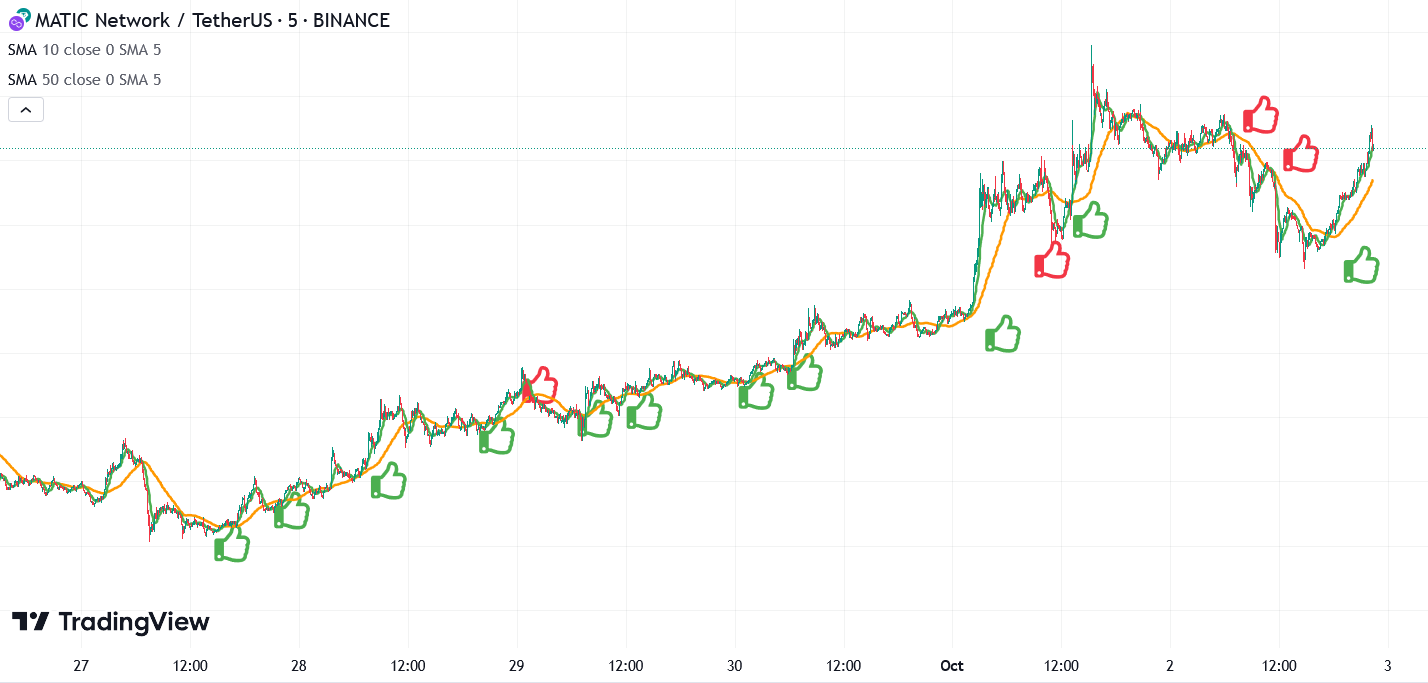
Each bar lasts 5 minutes, which is a great time frame for day trading. In this article, we’ll assume the perspective of a day trader. If you’re interested in trend trading, you can use a higher timeframe, but the principles remain the same.
As you can see, the 6 days represented on this chart have been quite bullish for this crypto asset pair. Based on the simple moving average crossovers, there were 11 potentially profitable long positions, and 4 potentially profitable short positions.
But wait! You might ask. If we’ve been using the 5-minute timeframe, shouldn’t there be more profitable trades than the 15 trades shown on the chart?
Well, there could be more. However, there is a risk of over-trading, especially when the simple indicators do not give you confident or clear answers on the trend. You’d rely more on luck to trade in such conditions!
A conservative crypto trading strategy does not take such risks. If you don’t place the wrong trade, you don’t lose money. So, it’s best to recognize when you should place a lucrative trade, and to put all your attention (and capital) into these rare chances.
Crypto day trading schedule
The crypto market is open 24/7 — this is both a curse and a blessing. On one hand, if you happen to hold a day job, you could trade crypto at night. On the other hand, a potentially good trade may slip right under your nose as you sleep through the night.
However, a foundational crypto trading strategy doesn’t rely so much on a “good trading hour”. The crypto market trades non-stop, so there isn’t really a trading hour. Even if you think the crypto market is more volatile when New Yorkers or Tokyo residents or Londoners are awake, volatility doesn’t always directly translate to good trading opportunities.
Because there isn’t necessarily a good trading hour, anyone can trade at any time. So, let’s come up with a crypto day trader schedule for someone who lives, let’s say, on the West Coast of the United States.
Wake up: 7 am
Open trading app: 8 am
Close trading app: 9 pm
Sleep: 10 pm
The trader should use some type of trading bot to recognize simple moving average crossovers and alarm them of a potential trade. Anything else happens between 8 am to 9 pm. The one-hour buffer is there to help the trader get a good nights’ sleep — which is important for retaining focus for the next trading day.
Following this schedule, the trader would have seen these good trading opportunities:
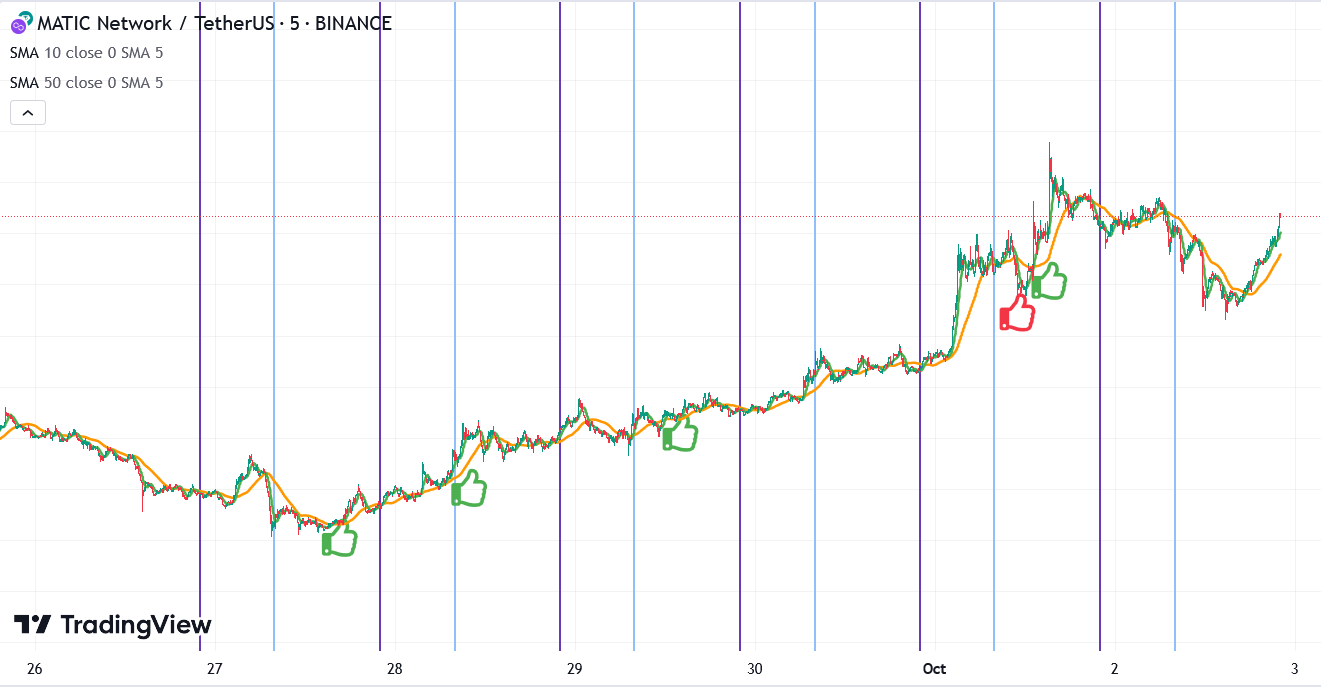
The purple line indicates the cut off time for the trader so that they could get ready to rest for the night. The blue line is when the trader is fully focused for the day’s trades. From left to right, between the purple and blue line, no trade can happen.
This leaves us with five potentially good trades — four long and one short. There’s also one day in which there are no potentially good trading opportunities. Compared to the fifteen trades that could happen, five seem like an extreme downgrade.
However, fret not! These five good trades are low risk, high gain trades based on the confidence of the simple indicators. Placing a large trade at these times could turn a large profit — even the short trade.
It’s better to make few but profitable trades, than many trades and hoping that a few become many more times profitable. In the latter case, you’d be gambling, and waste money on making trades that are not confident.
Don’t force trades
To reiterate a very important principle that we’ve discussed — don’t over-trade. It’s especially difficult, but crucial, to avoid trading during hours when we should be resting. As you can see in the chart below (a segment of the previous chart), an extremely good trade has passed at about midnight.
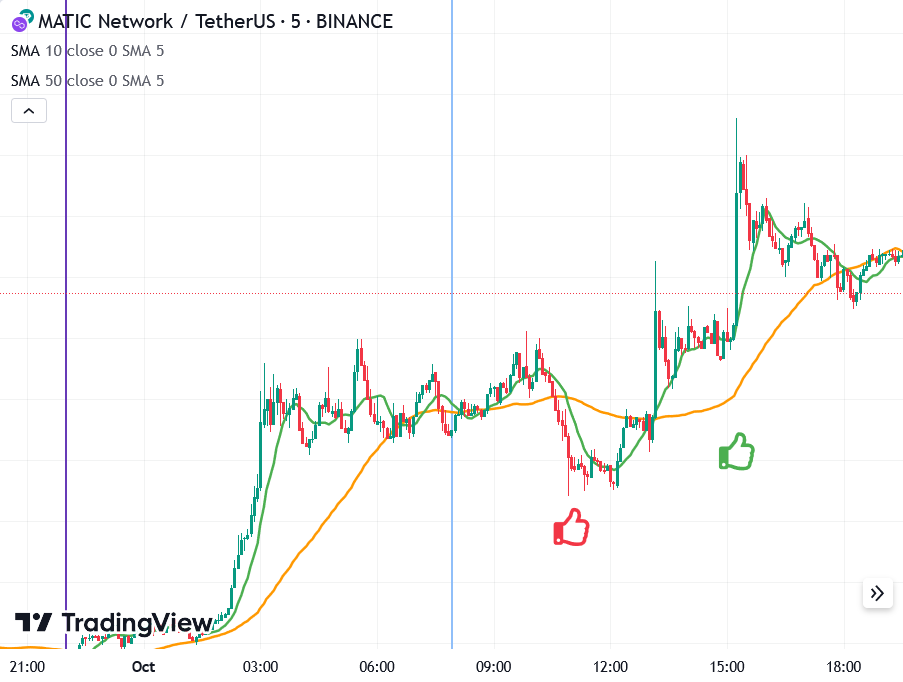
It’s important to understand that good trades will happen during waking hours, at least once in a week. Take a look again at the chart. A crossover indicates an opportunity to trade short before the trend flips on its head again and reveals a really good trade for long positions.
Now, take a look at the chart below. Imagine that it’s 10 am and you’re looking at a potential short position. Why shouldn’t you enter into a short position here? Because while the trend is on a clear downward and ranging motion, the SMA10 doesn’t provide adequate support.
It might be difficult to resist this trade, but fortunately if we just wait a little bit, a clear uptrend and good support around the SMA10 appears right in the evening of this day.
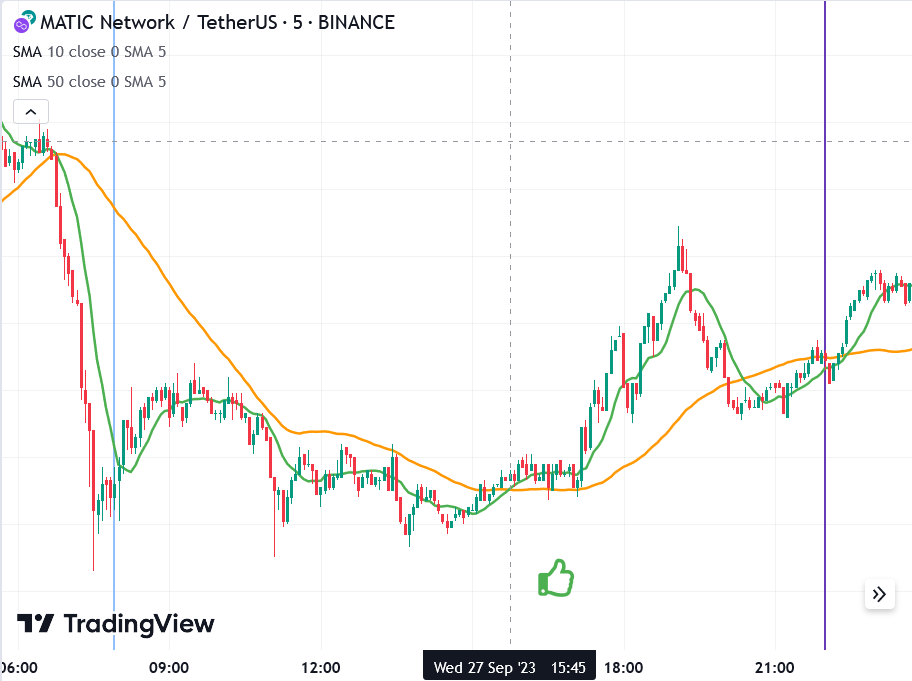
Use simple indicators
Another principle to adhere to is to use indicators that you truly understand. Then, use only a few indicators. Don’t try to cover your screen with a bunch of lines and indicators. Not only will you be confused, you’re also constantly going to create confirmation biases.
If you’re reading the chart manually, this happens 90% of the time. The case looks like this: You want to believe there’s going to be an uptrend, so you cherry-pick indicators that support this idea. The opposite can also happen in a volatile market. With so many indicators fighting for your attention, you’ll find yourself debating with yourself as you become increasingly unsure.
Remember — a clearly profitable trading opportunity will show itself. If using as many as three indicators allows you to see there’s a clear profitable trading opportunity, then no amount of indicators will point otherwise.
In this article, the example charts only use two indicators — SMA10 and SMA20. Yet, clear and low risks trade show themselves occasionally.
Rely on trade signals
Using trading signals created by professional analysts can help you increase your chances for making successful crypto trades. Professional analysts have access to way more data than you could have, and have employed a variety of crypto trading strategies for various market conditions.
In short, they have a foundational understanding of trading strategy — and more. Trading signal providers can work in a team, round the clock, to give high quality crypto trading signals for anyone living in any part of the world.
There are many services that you could choose from. Luckily, you’ve come across this article, presented to you by Blockcircle!
Blockcircle can help you
Blockcircle is a private trading and investment management community of computer scientists, quant traders, financial engineers and executives that come together to combine all their skills and experiences to create high quality trading signals.
To give you a picture of how we work, we have sub-teams that focus on different aspects of the crypto market. We look for undervalued gems based on fundamental analysis, new token offerings on various centralized and decentralized exchanges, use off-chain and on-chain analytics, web traffic analytics, as well as the reliable and traditional technical analysis.
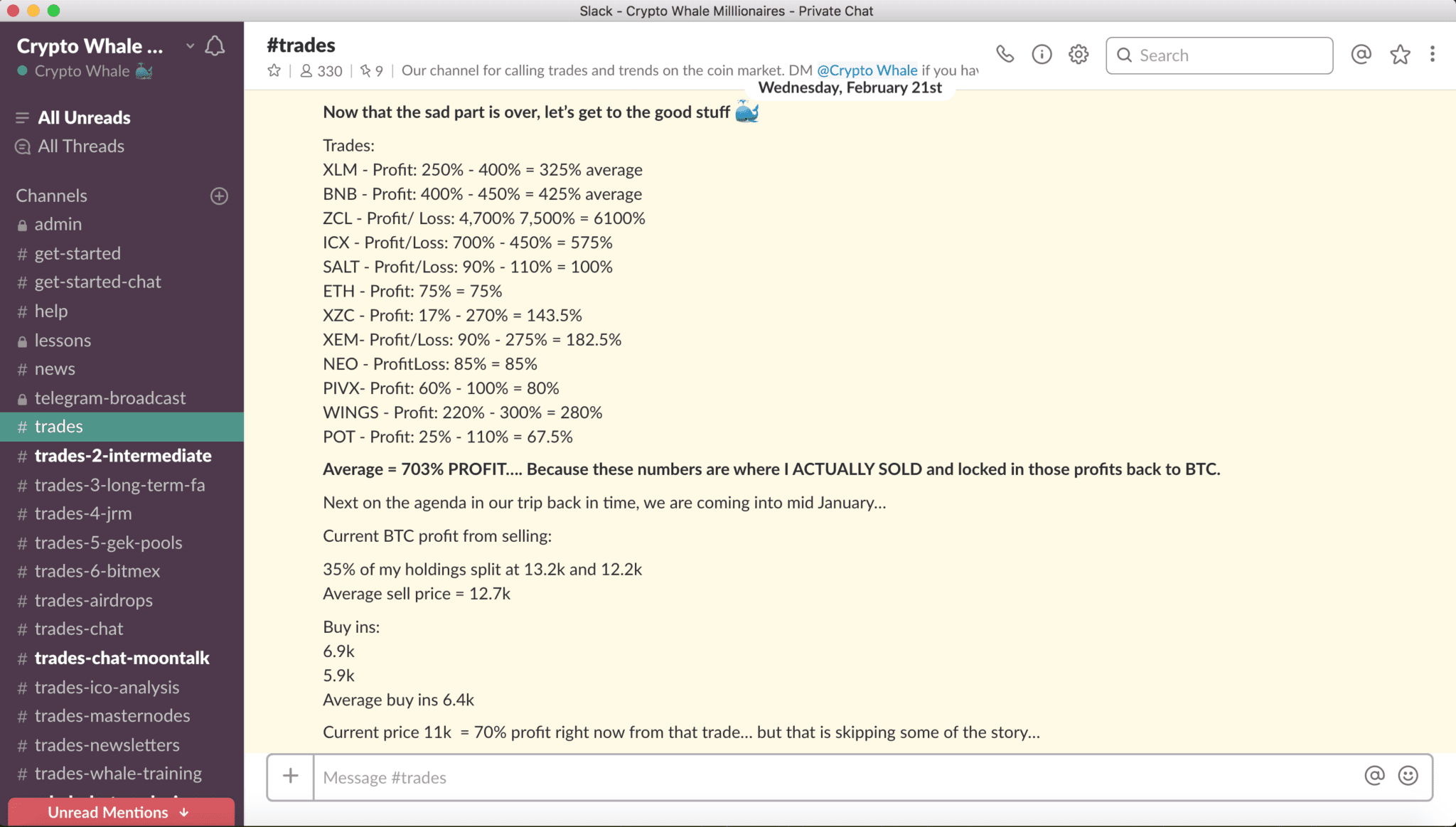
The group was founded in 2017 and has experienced two peak crypto bull markets in 2018 and 2021. These two periods of time have been a chance for many ordinary people to generate wealth, and become financially secure.
To learn more about what we can do for you, visit blockcircle.com.





